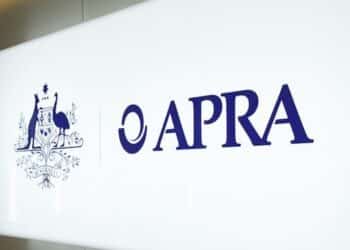On Wednesday, the Compensation Scheme of Last Resort (CSLR) said it expects the upcoming 2025–26 levy attributed to personal financial advice to exceed the $20 million subsector cap.
According to the CSLR, the process of confirming the levy estimate is “complex and heavily dependent” on both the Australian Financial Complaints Authority’s (AFCA) estimates of how many complaints will be resolved and proceed to the CSLR in FY25–26, and “the inclusion of any other large-scale firm failures”.
Speaking with ifa, Financial Advice Association Australia (FAAA) general manager policy, advocacy and standards, Phil Anderson, said the levy figure clearing the $20 million cap didn’t surprise him.
Anderson, who met with CSLR leadership on Wednesday, said: “They are still working through what they think it might be next year. They’ve got actuaries that they’re working with on this targeting to have a legislative instrument released at the end of January or early February of next year.
“So they’ve got another three months to get it all crunched. There’s the speed with which AFCA are processing these Dixon Advisory complaints, and it’s also the emergence of other matters that might add to the bill for the 25–26 year.
“But the practical reality is that we have around $135 million that will need to be paid for by the advice profession, or someone else on behalf the advice profession, over the course of the next three or four years.”
He added that if there is a delay in AFCA’s processing of complaints related to Dixon, then the number may not be “as bad as the worst case” scenario – a subsector total above $50 million.
“If you think $135 million across four years, in 24–25, Dixon Advisory makes up about $11 million of that. So that gives you $124 million,” he said.
“If you had $50 million in 2025–26, $50 million in 26–27, then you got roughly $24 million left for 27–28. It’s a matter of whether that peak gets pushed back.
“If it’s going to take four years to process all these Dixon Advisory complaints, then we’re going to see some big numbers in the next few years.”
Advisers to be ‘slugged’
The opposition, meanwhile, said the CSLR’s announcement is a blow to advisers, with shadow financial services minister Luke Howarth observing that the sector is “set to be slugged with an even bigger levy than this year”.
“The Albanese government is struggling to legislate even its highest priorities, and the advice community is right to doubt whether the government will act quickly, or even at all, to address the CSLR levy’s blowout,” Howarth said in a statement to ifa.
“The government was aware the estimated bill for advisers for this year would exceed $18 million in March. It then watched on as hundreds of new complaints flowed in up until the June deadline – bringing the future industry funded bill to $130+ million.”
He added that despite the originally proposed subsector cap being raised from $10 million to $20 million, advisers still “face the risk of the minister using his power to sign off on additional levies”.
“The government also reneged on covering the first year of the scheme, instead only paying three months and leaving advisers to pick up the bill,” Howarth said.
“The government’s recent mea culpa on the CSLR by supporting a Senate inquiry is welcomed but more urgent action is required. With time running out before an election, the government must work quickly to ensure financial advisers aren’t lobbed with another excessive levy next year. It can’t wait for the outcomes of an inquiry to start making changes to limit the damage.”
While Financial Services Minister Stephen Jones has a number of options available to him in handling a levy that exceeds a subsector cap, it is currently unclear which route he will decide to take.
According to Anderson, the hope is that the minister will spread the load across a number of subsectors.
“At the end of the day, our primary goal within the current legislation – so this is excluding the prospect of legislation for a more serious fix – is to ensure that any excess above the sector cap is picked up by other sectors, and that we’re dealing with a maximum of $20 million in in any one year,” he told ifa.
“I know that this is going to be uncomfortable for many, but maybe that is not such a bad outcome. We don’t want to be paying that, but if we contrast that with what a worst case could be – if you had to pay $50 million in any one year, that’s talking about $3,000 [per adviser].
“So, our current policy priority is to get confidence that the government and the minister in particular, would not choose to allocate anything in excess of $20 million in any one year to the advice profession, and that invariably means over the course of the next three years, other sectors would need to be asked to contribute.”




“Fair Funding for Fair Practices: Reconsider the Compensation Scheme of Last Resort”
Purpose and Rationale of the Petition
The Compensation Scheme of Last Resort (CSLR) unfairly imposes financial burdens on innocent, compliant financial advisers to compensate for the misconduct of other financial services providers, many of whom may operate in entirely different sectors or have ceased operations due to insolvency. As it stands, the CSLR funding model requires contributions from compliant advisers, regardless of their lack of connection to the breaches in question. This approach is unreasonable, as it overlooks the core principle that only those responsible for consumer losses or regulatory failures should bear the financial consequences. Such an industry-wide burden not only undermines the integrity of the advisory profession but also places unwarranted financial pressure on small advisory firms that serve their clients in good faith.
AFCA have just been a compensation no matter what organisation – notice every time someone takes them to court on merit AFCA are found at fault. CSLR is just another business unit of AFCA to catch what has not been paid and ASIC who have failed to actually do anything about the DIxons, Sterling New Life et al are culpable for the mess. I also hold the FAAA responsible for being asleep at the wheel too interested in their own agenda and failing to see what a mess this going to become and just rolling over. We should have been fighting this before the legislation was passed and only the AIOFP have been constantly attacking CSLR and we know what the FAAA thinks about their competition.
Considering ASIC failed in their duties to adequately regulate a known concern with Dixons, maybe their “so called” surplus in operating costs that was directed into consolidated revenue should now be directed to pay the Dixons bill?
Just saying….
Advisers must be punished:
1) Make them pass a BS “exam”
2) Make them write SOAs that are not wanted (or read) by their clients;
3) Make them beg to be paid every year
4) Make sure ASIC monitors advisers like a jail-warden
5) Make sure AFCA assumes an adviser is guilty unless they can provide volumes of filenotes
6) Make sure there are financial costs and levies imposed on advisers…
7) (I’m tired…)
Cool. I’ll just reachinto my pocket to pay. I’ll cover all you guys too.
The attitude by CSLR is “we’re great guys – CSLR, we’re giving away massive amounts of money”
The attitude of the govt is – fantastic, we’ll make the cost of doing business for the average advisor so high they’ll get out. At the same time we can look good to so called “victims” and not cost the tax payer a bean.
This also satisfies their long term objective of having the bulk of advice controlled by the industry funds and “unqualified” advisors.
Our sector is stupid to not understand this is the long term game.
we get sidetracked by rubbish concessions regarding an FDS or the fantasy about requirements for SOA’s
They know have to play this sector as mugs.
More fees for us for no service.
We cant take much more of this,
We are at breaking point, us that are still here have done all that’s been asked, we studied, sat the exam.
What did we get in return?
Bugger all.
Now the asic levy is expected to go up, this cslr levy is just out of control
Cant the government see that we are being squeezed out?
Is this just a experiment to see how far it can push an industry before it totally falls apart , as that is what it feels like
This is unfair. Advisers should not be hit with a bill for another business doing the wrong thing. It’s wrong.
This industry has become a shambles
So can advisers launch a class action against ASIC for failure to do their job, with regulating Dixons? Why is the bill passed to advisers who did nothing wrong, but the regulator was so incompetent that they let the whole thing blow up.
Is Evans and Partners being investigated by regulators for Phoenixing the goodwill (advisers and clients) from Dixon’s to the parent company? Is the liquidator taking steps to recover the value of the goodwill at market rates? If not, why not?
My back-of-the envelope valuation is around $30-45M. This sum, if recovered, could ease the burden on honest financial advisers, who do the right thing. It would also send a message to other corporates not to engage in this outrageous, despicable behaviour.
This is a joke. The only industry where Advisors are doing the right by their clients are paying for the mistakes of the industry and others. You can see why so many have left and the cost of advice is more unaffordable for those that need it the most.